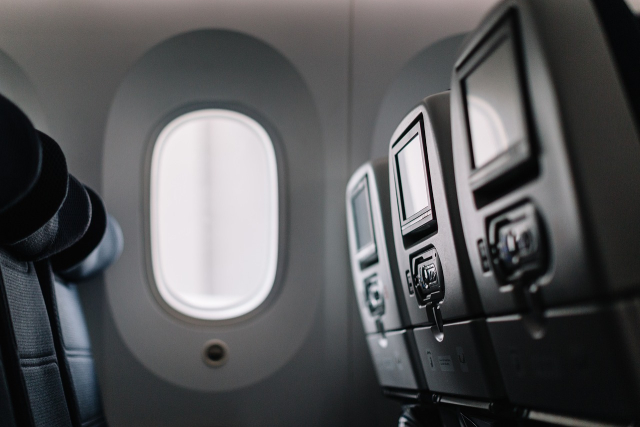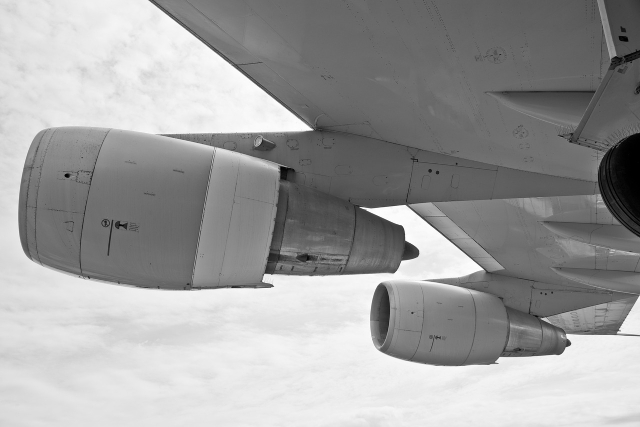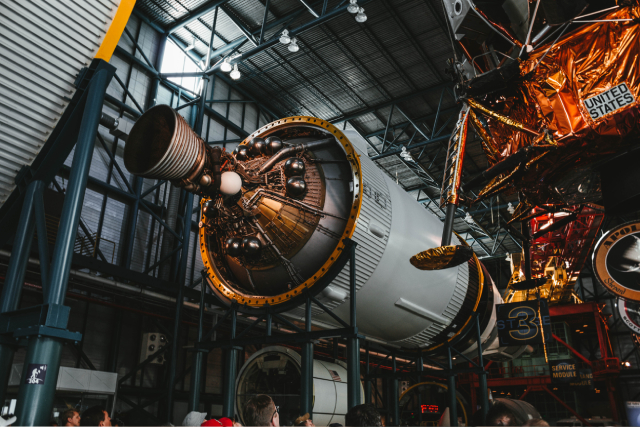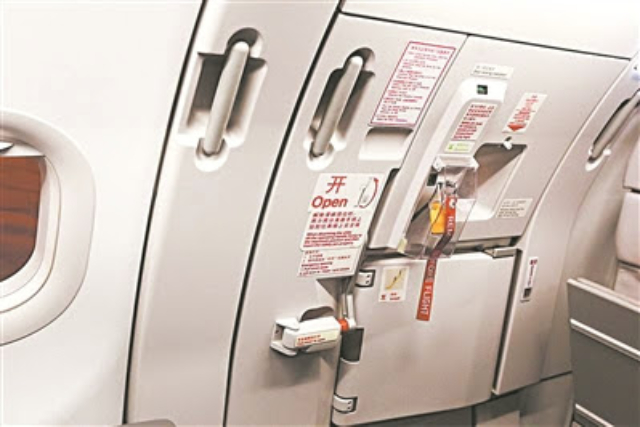Application of silicone in aviation field

As a high-performance synthetic material, silicone materials have been widely used in the aviation field due to their unique physical and chemical properties. With the continuous advancement of aviation technology, the demand for materials is also increasing. With its excellent high temperature resistance, corrosion resistance, and lightweight properties, silicone has become an important part of aircraft design and manufacturing.
The reduction of the structural mass coefficient, the extension of life, and the improvement of speed and efficiency of each generation of aircraft are all strongly dependent on the progress of materials science and technology. One generation of materials and one generation of aircraft fully reflect the leading and fundamental role of new materials technology in the development of the aviation industry.
Silicone materials have many excellent properties. They are typical semi-inorganic and semi-organic polymer materials. They have the characteristics of both inorganic polymers and organic polymer materials. Therefore, they have unique properties such as high and low temperature resistance, oxygen resistance, light resistance, and weather aging resistance, and have been widely used in the aviation industry. At present, silicone materials used in the aviation industry include silicone rubber, silicone resin, silicone grease, and silicone oil.
1. Application of silicone rubber in aviation industry
There are many types of silicone rubber used in the aviation industry. According to their vulcanization methods, they can be divided into room temperature vulcanized silicone rubber (including condensation type silicone rubber and addition type silicone rubber) and heat vulcanized silicone rubber. In addition, there is non-vulcanized silicone rubber. According to their functions, they can be divided into: oil-tight, air-tight, water-tight and other fluid sealing materials, vibration isolation, vibration absorption and other vibration reduction and noise reduction materials, thermal conductivity, heat insulation, insulation and other materials, conductive, magnetic, wave absorbing and other electromagnetic shielding and stealth materials, flame retardant, fireproof and other safety protection materials, etc. Therefore, this article takes the vulcanization method of silicone rubber as the main line to introduce the application of silicone rubber in the aviation industry.
1.1 Application of room temperature vulcanized silicone rubber in the aviation industry
Room temperature vulcanized silicone rubber is mainly used as a sealant. According to their uses in the aviation industry, they can be divided into general silicone sealants, high temperature resistant (anti-sealed degradation) silicone sealants, functional silicone sealants (such as conductive silicone sealants, fireproof silicone sealants, thermal conductive silicone sealants, radar wave absorbing silicone sealants, fuel resistant silicone sealants, silicone foam sealants, etc.).
1.1.1 General silicone sealants
General silicone sealants mainly play a sealing role, and the working temperature in the air medium is -60 to 250°C. These sealants have good bonding properties to metal materials such as steel, titanium alloy and aluminum alloy, zinc yellow primer, polyurethane topcoat and ceramic materials by matching with adhesive primers. They are used in the screwing, riveting joints of aircraft structural parts and the surface sealing of instruments, resistors, and radio electronic equipment, as well as the repair and sealing of sealed parts. Among them, some high-strength two-component condensation-type silicone sealants have a tensile strength of more than 6.0 MPa and an elongation at break of more than 450%. They have good bonding properties to metals and organic glass and are mainly used for sealing aircraft cabin windshields.

1.1.2 High temperature resistant (anti-sealing degradation) silicone sealant
The high temperature area of the aircraft engine and the rear fuselage and its environmental control system require a high temperature resistant silicone sealant with a temperature resistance of up to 300°C. Some high temperature resistant adhesives have a temperature resistance of up to 350°C and have excellent anti-sealing degradation performance. They can have good bonding properties to metal materials without the need for coating adhesive primers.

1.1.3 Conductive silicone sealant
With the development of electronic technology, modern warfare has entered the era of information warfare and electronic warfare. Anti-electromagnetic interference and communication confidentiality are crucial for electronic equipment and weapons and equipment. The number of electronic systems and equipment in military aircraft is increasing, and electronic systems and equipment are developing towards high frequency, wide bandwidth, high integration, high reliability and high precision; while electromagnetic interference will become more and more serious, and has become a prominent obstacle to the normal operation of electronic systems and instruments and equipment. Therefore, the joints, pores and sealed gaps in the electronic equipment compartment and working compartment of the aircraft. Conductive silicone sealants must be used to achieve electromagnetic protection and sealing.

1.1.4 Flame retardant and fireproof silicone sealant
Fireproof means that a material or component can withstand a flame of 1093℃ or even higher temperature for at least 15 minutes without burning through, and no flame can be observed on its back. Flame retardant means that the material has the ability to self-extinguish after the ignition source is evacuated, so that it can prevent combustion or delay the rapid spread of combustion when a fire occurs.
The aircraft's engine, auxiliary power system (APU), missile launch skin and other parts have long-term high operating temperatures, and the wires and cables on the fuselage are crisscrossed; once a potential fire zone causes a fire, it is very easy to spread to the entire aircraft. In order to isolate certain potential ignition zones, it is necessary to apply fireproof and heat-insulating silicone sealants.

1.1.5 Fuel-resistant silicone sealant
The fluorosilicone rubber obtained by introducing methyl trifluoropropyl chain segments into silicone rubber has good resistance to aircraft jet fuel, although its heat resistance is reduced. In the 1950s and 1960s, Dow Corning developed many room temperature vulcanized fluorosilicone sealants for different purposes, among which Q4-2817 was used as an integral fuel tank sealant for aircraft. The operating temperature range of my country's HM804 two-component fluorosilicone sealant is -55 to 230°C. It has good high-temperature airtight degradation resistance and excellent electrical insulation properties. It is widely used in the potting of electrical components working in aircraft fuel systems, the bonding of fluorosilicone rubber products, and the sealing of special high-temperature parts of aircraft integral fuel tanks. It is currently the most widely used, largest-volume, and most technologically mature fluorosilicone sealant brand in my country's aviation industry. The process performance, mechanical properties, high-temperature resistance, and oil resistance of HM809 single-component fluorosilicone sealant reach or exceed the level of similar foreign products, and it is gradually being used on aircraft.
1.1.6 Foam silicone sealant
Room temperature vulcanized silicone foam sealant is a new functional sealing material. In addition to having good weather resistance, heat resistance, cold resistance and electrical properties, it also has the characteristics of light weight, good cushioning, strong heat insulation, sound insulation, high compressibility, etc., as well as convenient use, easy repair, and excellent comprehensive performance. It is an ideal lightweight packaging material. Generally, the foaming time of silicone foam sealants is short (such as the series of foam sealants of Nusil Company in the United States), and many use occasions in the aviation industry, such as foam sealants for aircraft bodies and airborne equipment, require a fairly long active period to ensure smooth foaming and vulcanization. Therefore, it is difficult for general silicone foam sealants to meet the use requirements.
1.2 Application of heat-vulcanized silicone rubber in the aviation industry
1.2.1 General silicone rubber
With the development of the aviation industry, heat-vulcanized silicone rubber has replaced general rubber (natural rubber, styrene-butadiene rubber, chloroprene rubber, ethylene-propylene rubber, etc.) with its excellent heat resistance, weather resistance, electrical insulation and chemical stability, and is widely used in the manufacture of rubber parts, rubber sheets, rubber hoses and profiles that work in air, ozone, fuel, lubricating oil and electric fields, greatly simplifying the varieties and types of rubber used in the aviation industry. The operating temperature range of general silicone rubber is -70 to 250°C, and some parts can be used below -70°C or above 250°C.

1.2.2 Damping silicone rubber
Damping vibration reduction rubber is a type of material that uses the damping properties of rubber to improve the vibration prevention and vibration reduction effects. It can effectively avoid the failure of electronic devices and instrumentation, greatly increase the life of mechanical parts, and thus improve the accuracy and reliability of aircraft equipment. The glass transition temperature of silicone rubber is low, and the performance value changes little near room temperature. The main chain silicon-oxygen-silicon structure makes its mechanical properties relatively stable in a wide temperature range (-50 to 200°C). Traditional damping vibration reduction materials often have a narrow temperature and frequency range, which cannot adapt to the wide frequency range of low-frequency vibration during aircraft startup and high-frequency vibration during operation, and it is difficult to take into account the wide operating temperature of the cold winter in the north and the hot summer in the south. Therefore, the aviation field often uses silicone rubber as the first choice of damping material, especially in the case of high stress and strain that generate high heat.
Helicopter viscoelastic damper, also known as shimmy damper, is the main functional component in the helicopter star-shaped flexible hub. It can prevent the unstable movement of the helicopter rotor system and prevent the occurrence of ground resonance and air resonance. As the core material of rotor viscoelastic damper, high-strength, high-fatigue-resistance and high-damping silicone rubber is crucial to the development of helicopter rotor viscoelastic damper technology.

1.2.3 Conductive silicone rubber
In order to avoid mutual electromagnetic interference of electronic equipment, conductive rubber has been widely used in the sealing of electronic systems and instruments and equipment, and high-conductive rubber generally uses silicon and fluorosilicone rubber as the base rubber, and silver powder or silver-plated materials as conductive fillers. The maximum operating temperature of this type of conductive material is 125℃, or even 160℃, and it has excellent conductivity, low temperature resistance, high temperature resistance and anti-aging performance.
1.2.4 Flame retardant and fireproof silicone rubber
In order to improve the safety of aircraft, flame retardant silicone rubber and flame retardant and fireproof silicone rubber and their products are also used in aircraft engines and wires and cables to a certain extent. For example, the TG series flame retardant tape hose has flame retardant properties that meet the requirements of civil aviation, produces small amounts of smoke and has low toxicity. The flame retardant properties of some fire-retardant silicone rubbers reach FV-0 level. A 3.2mm thick test piece is burned at 1050~1150℃ for 15 minutes, and the flame will not penetrate. It can be molded into rubber clamps, gaskets and sleeves, and is used in aircraft engine parts.
1.3 Application of non-vulcanized silicone rubber in the aviation industry
Non-vulcanized sealing putty made of non-vulcanized silicone rubber as the base material is generally only used for structural assembly surface sealing (i.e., seam sealing), groove sealing, and some structural sealing that needs to be disassembled. The low modulus and non-vulcanization characteristics of non-vulcanized sealing putty bring great convenience to the sealing of the structure. In the sealing of the surface between the frame and the skin of the aircraft cabin structure, on the sealing assembly line that is more than ten meters long, it is not limited by the active period and construction period of room temperature vulcanized sealants, and putty can be laid and riveted structural parts can be laid at ease, which is very beneficial to ensure the sealing and assembly quality of the structure.
The earliest aircraft integral fuel tank groove seals used non-sulfurized polysulfide rubber sealing putty; in the 1960s and 1970s, as the use temperature requirements for sealing putty became higher and higher, the United States developed non-sulfurized fluorosilicone and nitrile silicon sealing putties for the sealing of aircraft integral fuel tank grooves, space stations and other spacecraft systems, to replace the non-sulfurized polysulfide sealing putty with lower use temperature.
2 Application of silicone resin in the aviation industry
Silicone resin is a thermosetting polysiloxane system with a highly cross-linked structure. It has excellent heat resistance and weather resistance, and has excellent electrical insulation, chemical resistance, hydrophobicity and flame retardancy. The R/Si ratio is one of the main indicators for judging the content of trifunctional chain segments in silicone resin and controlling quality. It has an important influence on the hardness, softness, thermal weight loss and crack resistance of silicone resin paint film.
In the aviation industry, silicone resin is mainly used as a high-temperature resistant coating. For example, organic silicon high temperature insulation coating can withstand heat of 600℃ for a long time and 700℃ for a short time. It has excellent electrical insulation performance, high adhesion and high and low temperature alternation resistance, and is used in engine cables, windings, hot rollers and electric heating equipment. High temperature resistant and laser ablation resistant organic silicon coating is coated on steel. Its 900μm thick coating is irradiated with 531W/cm2 laser power density for 4s. The temperature of the coated steel substrate is about 1000℃ lower than that of the back of the blank steel substrate. It is used in laser thermal protection of sensitive parts of aircraft. Low temperature curing heat-resistant silicone resin-based coating can withstand heat of 300℃ for a long time. It has good heat resistance, adhesion and medium resistance. It is used on the inner and outer surfaces of the low-pressure turbine shaft and fan shaft of the engine. High temperature resistant infrared stealth coating has excellent heat resistance, good adhesion and high temperature infrared wave stealth performance below 300℃, and is used in engine infrared stealth and near the engine tail nozzle.
Silicone resin is used as a high-temperature resistant sealant in small quantities, but it is very important. It is an important solution for some harsh sealing environments.
With the development of the aviation industry, the requirements for silicone materials are getting higher and higher. On the one hand, it is necessary to develop new types of silicone materials, such as high phenyl silicone rubber, carborane silicone rubber and silicon nitrogen rubber, and on the other hand, it is necessary to develop functional silicone materials, such as high fatigue resistance and vibration reduction silicone rubber, electromagnetic shielding silicone rubber, high-performance thermal protection silicone rubber, etc.
